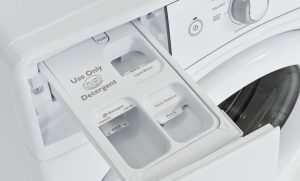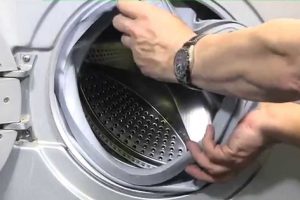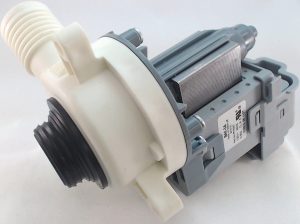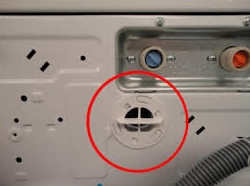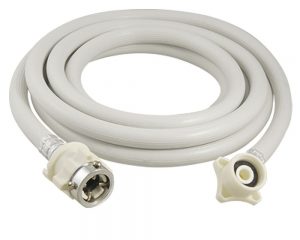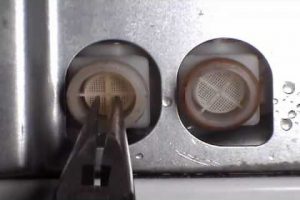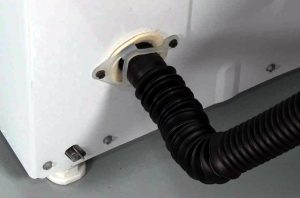Is your washer leaking? Here is how to fix it.
If you notice that your washing machine starts leaking water over the floor, do not panic. Most leaks can be fixed easily. As a first step, find the source of the leakage by checking these areas: detergent dispenser, main door, drain pump filter, safety air vent, inlet hoses and drain hose.
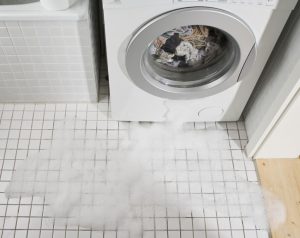
Follow these simple tips to stop your washer from leaking:
-
Check the detergent dispenser
Clean the detergent dispenser for any items or debris. Even tiny debris can prevent proper dispensing and cause the compartment to overfill and leak. Push down the depressed tab located between the bleach and softener compartment to remove the detergent dispenser. Then, clean and rinse all the components of the dispenser. Finally, replace the detergent dispenser into the washer.
-
Check the door seal
The door seal is one of the most common causes of a leaking washing machine. You can clean the door to remove any residues on the gasket and inside door glass. Just follow these simple tips:
- Use a rag or cloth with either hot soapy water or cleaning solution.
- Pull the lip of the door seal back and wipe underneath and around it.
- Wipe the inside door, from top to bottom, and around to the other side. Pay extra attention to the bottom of the door where lint and residue can accumulate.
If the door and seal are clean but the washer is still leaking, the seal is most likely torn or damaged and should be replaced. It will be better to call a professional appliance repair technician to do this job for you.
-
Check the drain pump
The drain pump is mechanism, which pumps water out of the tub and delivers it to the drain. It is made with internal seals that can get worn out over time, leading to leaks. If you see signs that the pump is leaking such as staining or rust, it should be replaced.
-
Check the safety air vent
Leaks from safety air vent are usually due to excessive use of detergent or soft water, which requires less detergent to use. If the detergent you put in your washer produces too many suds, it can cause overflow problems and lead to leaks. Follow the manufacturer’s recommendations and use appropriate amount of detergent for your washing machine or reduce the quantity of detergent.
-
Check inlet hoses
Leaks from inlet hoses are caused by loose or mis-threaded inlet hose, damaged rubber seal or inlet hose itself. The good news is the inlet hoses are simple to replace. After turning the water off, unscrew the hose from the tap. The opposite end has the same fitting, and screws onto the washing machine inlet. Just remove and replace the inlet hoses. Make sure the rubber seal is removed as well because it can stick to the fitting. The new hose should come equipped with new rubber seal. If inlet hose connected to the home valve has been replaced and the leak persists, contact the plumber. If the hose has been replaced and leak persists from the back of your washer, the unit requires a repair service.
-
Check the inlet filters
Clogged inlet filters may not allow water to flow properly and cause back pressure that could lead to leaks.
There are few simple steps to clean the inlet filters:
- Turn the water off at the wall valves.
- Disconnect the inlet hoses from the back of the washer.
- Pull the filters out of the inlet valves using the plier.
- Wash the filters in warm water until all signs of build-up are gone.
-
Check the drain hose
Leaking drain hose is easily repaired or replaced. You will need someone’s help to remove the drain hose from its position. Once it was done, you will cope with the rest of job by yourself.
Follow these tips to get the job done quickly and easily:
- Turn off the washer from electricity supply.
- Using the wrench remove the bolt, which is holding the hose to the machine.
- Remove the hose from the drain.
- Take the washers, and replace them with new ones.
- Test the hose for leaks.
- Replace the drain hose on the drain.
- Add the hose to the machine.
- Turn on the power and water.
- Check that the hose is no longer leaking.
If you still have leaks from your washer, the unit requires a repair service. You are welcome to contact us (818) 600-2559 and schedule an appointment with our professional technician.
The most probable things that might be causing the water leaks:
- Cracked or damaged drain pump
- Torn tub seal/door boot seal
- Leaking drain hose
According to the Insurance Institute for Business and Home Safety, the average claim for water damage caused by washing machines is over $5,000. To prevent your washing machine from leaking follow these simple tips:
- Replace the washer supply hose every 5 years
- Check your sewer line after a storm, before running your washing machine
- Do not overload your washer
- Have your machine professionally installed to avoid water line pinches and drainage issues
- Close the intake valve behind your machine at the first sign of trouble

